St. Petersburg, FL Pollen and Allergy Report for Summer 2023
Pollen Allergy Trends in St. Petersburg, FL
When is pollen lowest in St. Petersburg, FL?

May
Lowest month total PPM
Avg. PPM
When is pollen highest in St. Petersburg, FL?

April
Highest month total PPM
Avg. PPM
How does pollen in St. Petersburg, FL compare to Florida?
St. Petersburg has a higher average PPM than the state of Florida.
St. Petersburg yearly avg PPM:
Florida yearly avg PPM:
How does pollen in St. Petersburg, FL compare to the USA?
St. Petersburg has a higher average PPM than the USA.
St. Petersburg yearly avg PPM:
USA yearly avg PPM:
Is pollen worse this year in St. Petersburg, FL?
Spring 2023 was better than spring 2022.
Spring 2023 PPM:
Spring 2022 PPM:
Average PPM in St. Petersburg, FL
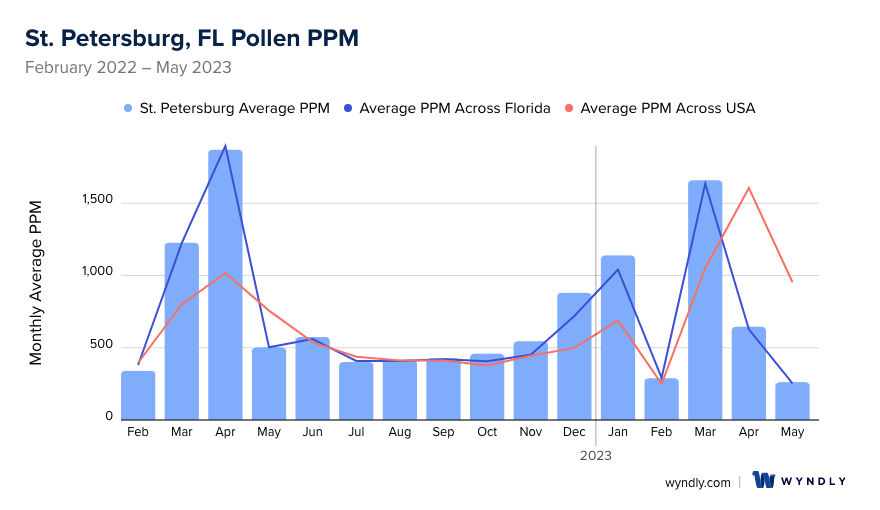
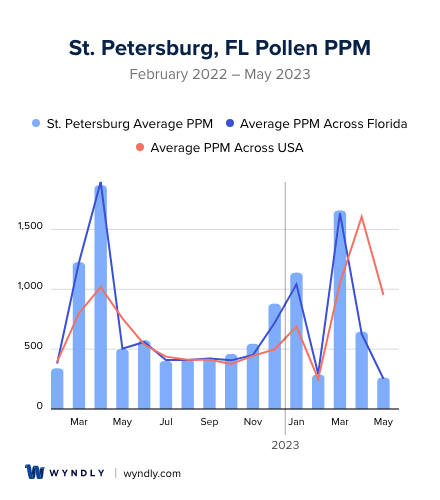
St. Petersburg, FL Pollen and Allergy Breakdown by Month
Grass
When is grass pollen highest in St. Petersburg, FL?
April has the highest grass pollen in St. Petersburg, FL with an average PPM of
When is grass pollen lowest in St. Petersburg, FL?
December has the lowest grass pollen in St. Petersburg, FL with an average PPM of
Tree
When is tree pollen highest in St. Petersburg, FL?
March has the highest tree pollen in St. Petersburg, FL with an average PPM of
When is tree pollen lowest in St. Petersburg, FL?
July has the lowest tree pollen in St. Petersburg, FL with an average PPM of
Weed
When is weed pollen highest in St. Petersburg, FL?
December has the highest weed pollen in St. Petersburg, FL with an average PPM of
When is weed pollen lowest in St. Petersburg, FL?
February has the lowest weed pollen in St. Petersburg, FL with an average PPM of
St. Petersburg, FL Pollen Monthly Breakdown by Pollen Type
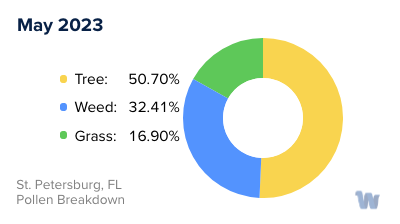

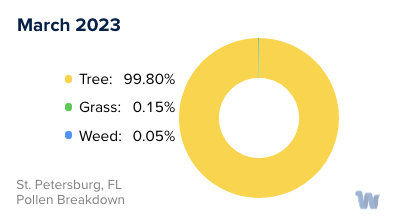
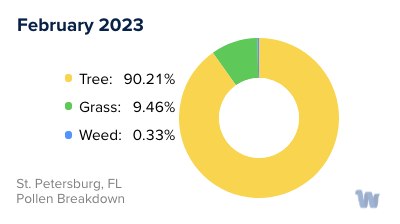
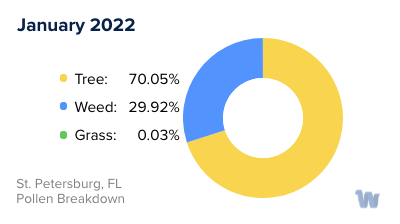
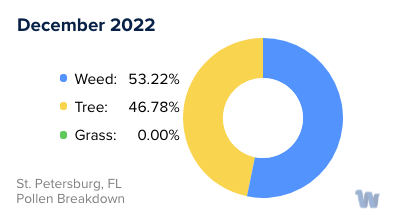
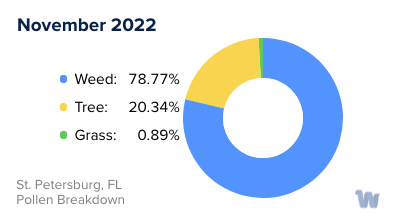
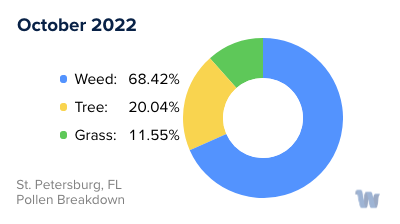
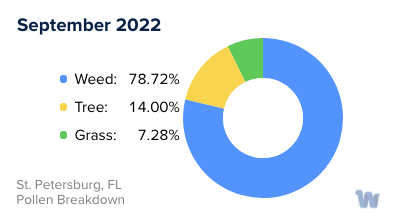
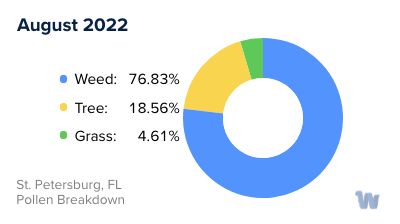
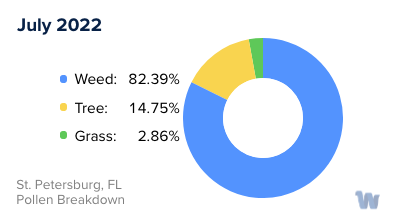
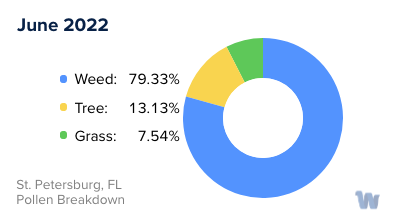
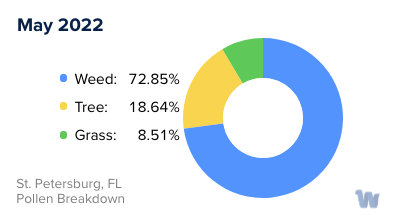
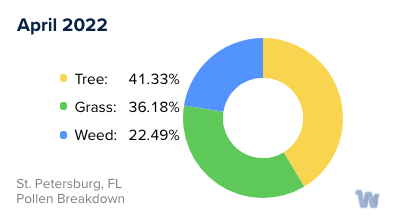
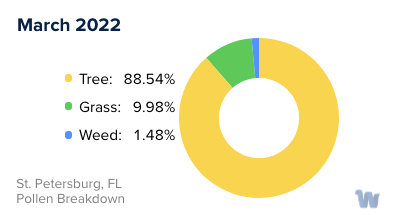
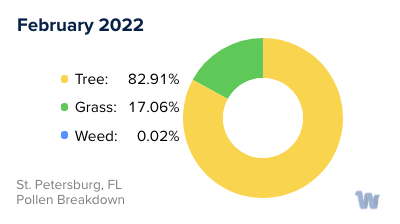
Pollen and Hay Fever in St. Petersburg, FL
When the seasons change in St. Petersburg, Florida, many residents find themselves sneezing, sniffling, and rubbing their eyes more often than usual. This is due to the presence of pollen, a fine powdery substance that plants release into the air to fertilize other plants. While beneficial for plant reproduction, pollen can become an annoyance for those sensitive to it, causing what is commonly known as hay fever, or more technically, pollen allergies.
In St. Petersburg, the types of pollen that typically affect people vary according to the seasons. In the spring, from February to April, tree pollen is the most common culprit. Oak, pine, and cedar trees are common in the area, and their pollen can cause allergic reactions.
As the calendar moves into summer, from May to August, grass pollen becomes more prevalent. Bahia grass, Bermuda grass, and Timothy grass release their pollen into the warm summer air, causing hay fever symptoms to persist in those sensitive to these types of pollen.
When autumn arrives in September, weed pollen begins to dominate, lasting through November. Ragweed is the most common weed in Florida known to cause hay fever, but other weeds, such as sagebrush and pigweed, can also contribute to the mix of pollen in the air.
Throughout the year, pollen levels can be influenced by factors such as temperature, wind, and rainfall. Days that are particularly hot and windy can see higher pollen counts, as these conditions help to spread pollen more effectively.
In St. Petersburg, it's not uncommon for residents to check daily pollen forecasts just like they would the weather, helping them plan their outdoor activities to minimize their exposure during high pollen count days. For those prone to hay fever, understanding the types of pollen and their seasons can be an essential part of managing their symptoms and maintaining their quality of life.

